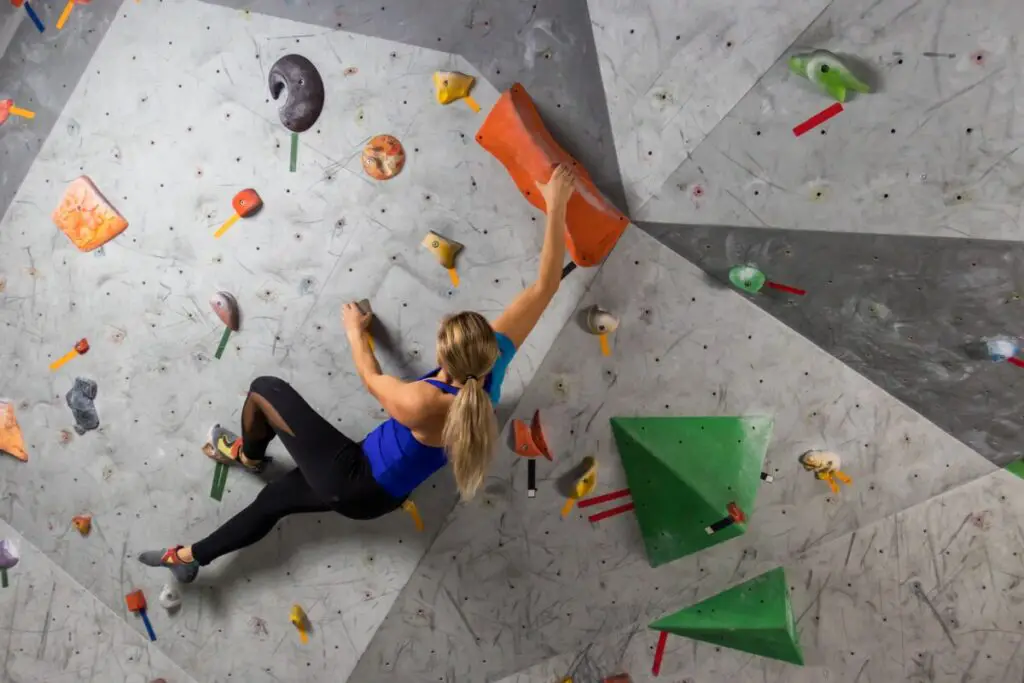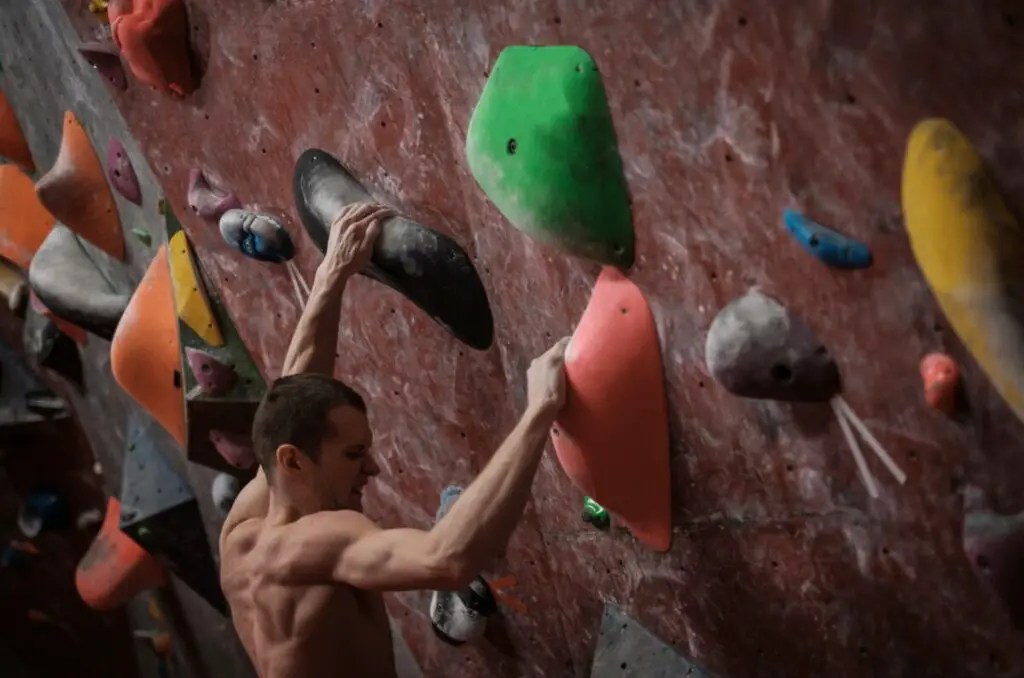
I loved watching the Olympics. In 2016 the Olympics announced a new sport to compete in, Bouldering. Many people wonder how did the judges come to their scores in the bouldering competition, so I searched for the scoring system for the bouldering challenge.
The score for bouldering is determined by how many zones or tops an athlete completes within four minutes. If two athletes tie in the number of zones and tops they accomplish in four minutes, the winner is the athlete who completed that amount of tops and zones with the least number of attempts.
Bouldering is such an exciting sport at the Olympics. Read on more to learn in detail how the scoring system works at the Olympics, and how it differs from the other Olympic climbing scoring systems.
Bouldering Zones versus Tops
There are two ways to gain points in bouldering. One is by reaching the top another is by reaching a zone.
A zone is a middle point of the climbing sequence. When an athlete reaches the zone boulder they will hold onto it with both hands for a second and it will count as them achieving the zone. Each zone will give an athlete 100 points.
The top is the boulder at the very top of the climbing course. When an athlete reaches the top, they will obtain 230 points. This is one of the harder boulders to reach. With this fact, many Olympians will focus more on obtaining a lot of zone points instead of reaching hard for the boulder at the top.
Once you reach the top boulder you need to hold onto it with two hands, and only then can you let go and obtain the 230 points from this boulder.
Athletes are only given four minutes to obtain as many points as possible. There were three problems in the 2020 Olympics, which has been the only Olympics so far to have bouldering as a featured sport.
This means that there were only three tops and three zones, so if an athlete were to complete the course perfectly, they would be able to obtain a total of 990 points from climbing.
Bouldering Attempts

If there was a tie between two athletes who have reached the same amount of tops and zones, this rule would come into play. Each attempt to reach a zone or top counts against you in the terms of a tie, therefore reaching a zone or top on your first attempt is ideal.
To reach a zone or a top on the first attempt is called flashing. To flash means that you looked at the course beforehand and planned how you are going to get to each zone and top perfectly, so it only took one attempt to get to each zone or top.
If you do not get to the top on the first attempt, though, they will take 20 points away from you. This is consistent without a tie or with a tie. Meaning if there is one point you want to flash, you would likely become the top boulderer for that round of the competition.
Difference between Olympic Bouldering and Junior Olympic Bouldering
There is not much of a difference between junior bouldering competitions versus the Olympics bouldering competitions. The main difference is that junior competitions usually give the athlete five minutes to complete the exercise. In the Olympics on the other hand they only give the athlete 4 minutes to complete the course.
This little bit of extra time makes it more manageable for participants to reach more zones and tops. This means more people should be able to have a fighting chance for completing courses.
Difference between Bouldering and other Olympic Climbs
In the Olympics, there are three different climbs. There is bouldering, speed, and lead climbing. Each of these climbs has its own different skill sets to accomplish well.
Even though all of these different kinds of climbing are different, all three areas are competing for the same golden metal. Therefore, bouldering athletes must know each of these styles since they can gain more points by competing in those competitions well.
Speed climbing is accomplished by a climber being faced with a rock wall. They then climb it twice as fast as they can. The fastest time is then taken and that counts as their rank. The finalists for the speed climbing then all start the climbing wall at the same time and race to who will get to the top first.
Lead climbing on the other hand is scored by how many different holds a climber with a rope can reach in six minutes. The climber who reaches the highest point gets the highest score in this area and then that score is multiplied by the climber’s score in the other two disciplines of bouldering and speed climbing. Therefore, lead climbing can bring in a lot of points in the Olympics.
Lead climbing and speed climbing scores are calculated towards a bouldering climber’s score and therefore are important to the Olympic process.
Critics against the Bouldering Scoring System in the Olympics

Many people do not like how the Olympic board has decided to score bouldering. There are many different arguments going around about how the Olympic judges can change their rating system to make it a more fair and equal grading system.
The main argument is that bouldering, speed climbing, and lead climbing are all lumped together and forced to compete for the same metal. They argue that these are three separate sports and should be treated as such.
Another argument is that each attempt to reach a top or a zone should count against the athlete. An athlete who takes four attempts to reach the top gets the same score as an athlete who only took two attempts to reach the top.
It would be fairer to count against every attempt to make it more reflective of the athlete’s skill in flash climbing. Bouldering truly is a strategic climbing skill and counting against each of the attempts gives a better view of what the principles of the sport are.

